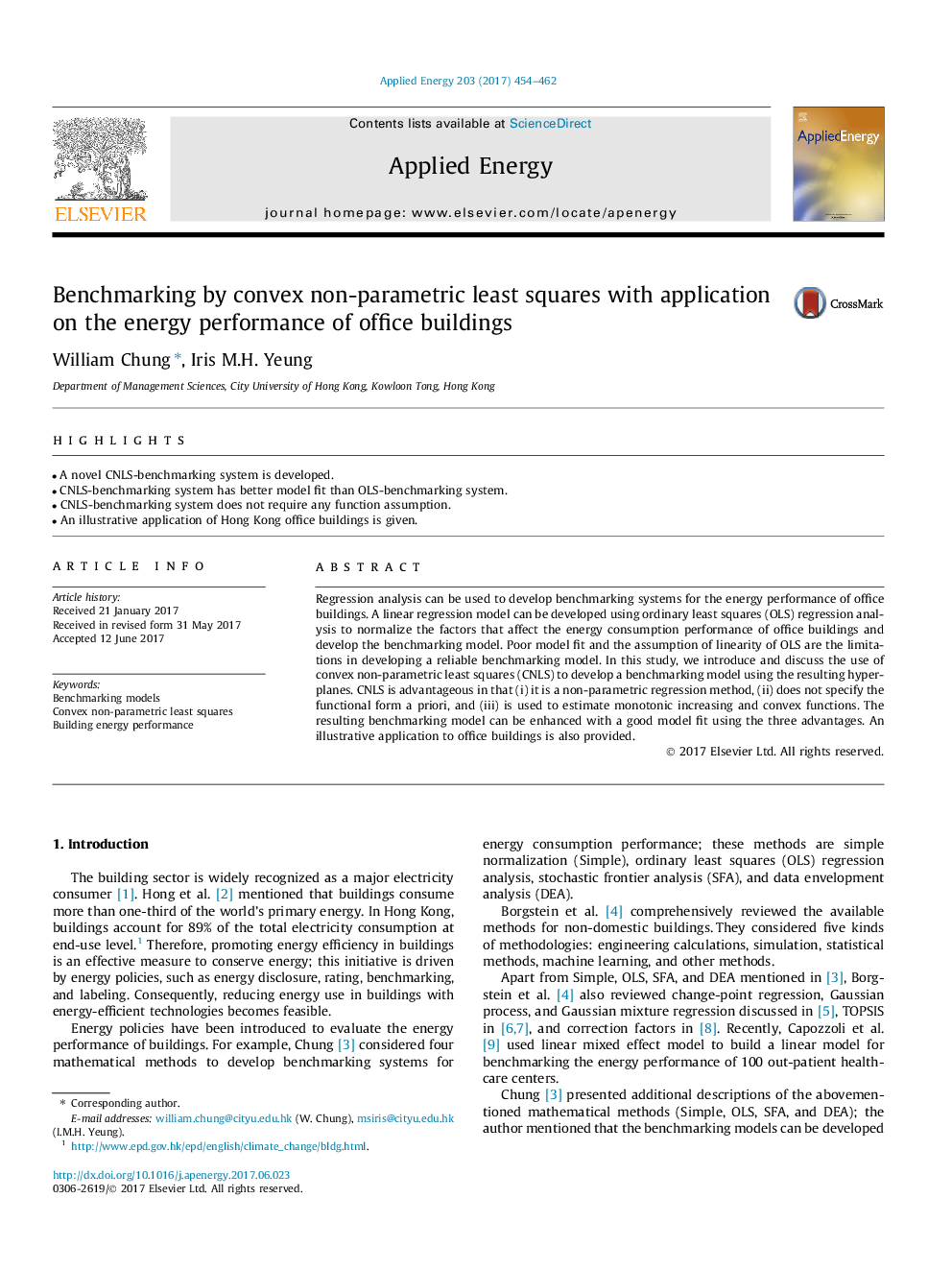| Article ID | Journal | Published Year | Pages | File Type |
|---|---|---|---|---|
| 4915782 | Applied Energy | 2017 | 9 Pages |
Abstract
Regression analysis can be used to develop benchmarking systems for the energy performance of office buildings. A linear regression model can be developed using ordinary least squares (OLS) regression analysis to normalize the factors that affect the energy consumption performance of office buildings and develop the benchmarking model. Poor model fit and the assumption of linearity of OLS are the limitations in developing a reliable benchmarking model. In this study, we introduce and discuss the use of convex non-parametric least squares (CNLS) to develop a benchmarking model using the resulting hyperplanes. CNLS is advantageous in that (i) it is a non-parametric regression method, (ii) does not specify the functional form a priori, and (iii) is used to estimate monotonic increasing and convex functions. The resulting benchmarking model can be enhanced with a good model fit using the three advantages. An illustrative application to office buildings is also provided.
Keywords
Related Topics
Physical Sciences and Engineering
Energy
Energy Engineering and Power Technology
Authors
William Chung, Iris M.H. Yeung,
